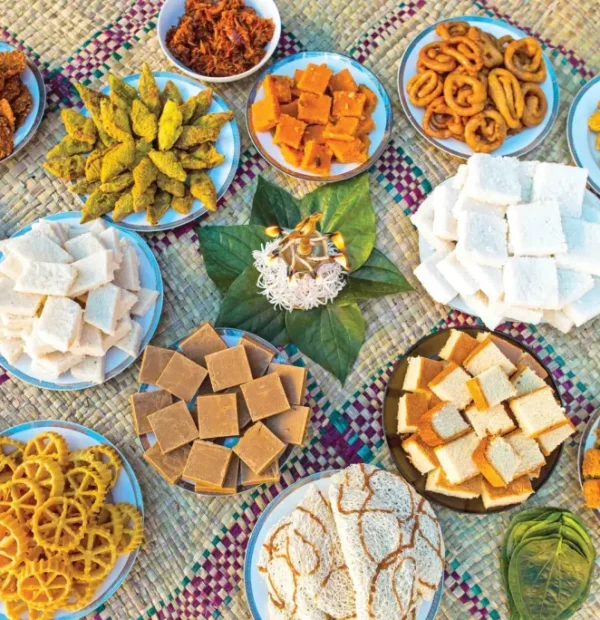Sinhala & Tamil New Year

The Sinhala and Tamil New Year, also known as "Aluth Avurudu" in Sinhalese and "Puthandu" in Tamil, is a traditional and cultural festival celebrated in Sri Lanka by both the Sinhalese and Tamil communities. It marks the beginning of the new year according to the respective lunar calendars of these two ethnic groups. The festival usually takes place in mid-April, and it is one of the most widely anticipated and joyous occasions in the country.
Key features and aspects of the Sinhala and Tamil New Year:
- Cultural Celebration: The Sinhala and Tamil New Year is a celebration of culture, heritage, and the agrarian way of life. It brings people together to honor their traditions and customs.
- Harvest Festival: The festival is closely tied to the agricultural cycle, as it coincides with the end of the harvest season and the start of the planting season. It's a time of abundance and thanksgiving for the blessings of the previous harvest.
- Astrological Significance: The timing of the Sinhala and Tamil New Year is determined by astrological calculations based on the transition of the sun from the Meena Rashi (Pisces) to the Mesha Rashi (Aries). This moment marks the beginning of the new year.
- New Year Customs: The festival is marked by a series of traditional customs and rituals. These include cleaning and decorating homes, lighting oil lamps, preparing special meals, and exchanging gifts and well-wishes among family and friends.
- New Year Games: Traditional outdoor games and activities are an integral part of the celebrations. These games, known as "Avurudu Kumari," include events such as tug-of-war, climbing a greased pole, pillow fighting, and various other folk games.
- Cooking and Food: Special traditional dishes are prepared for the New Year, including sweetmeats (such as "Kavum" and "Kokis") and other delicacies. Families gather to share these meals and celebrate together.
- Cultural Dress: People often dress in traditional attire, which includes colorful and intricately designed clothing. The attire reflects the cultural identity and pride of the Sinhalese and Tamil communities.
- Religious Observances: The Sinhala and Tamil New Year also has religious significance, with many families visiting temples and performing rituals to invoke blessings for the year ahead.
- Community and Family Bonding: The festival fosters a sense of community and family unity. It's a time for reconciliation, forgiveness, and starting anew.
- National Holiday: The Sinhala and Tamil New Year is a public holiday in Sri Lanka, and the entire country takes part in the festivities.
- Cultural Performances: Traditional music, dance performances, and cultural shows are often organized to entertain and engage people during the New Year celebrations.
Overall, the Sinhala and Tamil New Year is a time of joy, renewal, and cultural pride in Sri Lanka. It highlights the country's rich traditions, the importance of agriculture, and the unity of its diverse ethnic communities.


